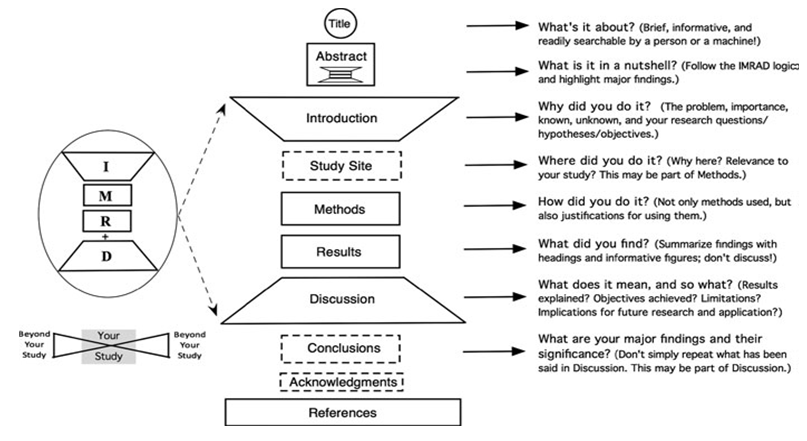PLEASE RENAME MANUSCRIPT ACCORDING TO YOUR PAPER ID.
Title: [Concise and Informative Article Title]
1Firstname Lastname, 2Firstname Lastname, 3Firstname Lastname
1Affiliation 1, 2Affiliation 2; 3Affiliation 3
1Email 1, 2Email 2; 3Email 3
Email address (institutional preferred), ORCID ID
*Correspondence: [email protected]; author name.
Abstract: A single paragraph of about 200-300 words maximum. For research articles, abstracts should give a pertinent overview of the work.
Keywords: keyword 1, keyword 2, keyword 3. (Maximum 5 words)
1. Introduction:
The introduction should identify key ideas of the research, why it is important; pose research question that needs to be answered and how the findings contribute to the discipline. (Introduction should not contain sub-headings)
2. Literature review/Study site:
This section is very important for your article. Review the main articles related to the main theme of your work. Summarize a number of articles which you have considered related and important for your research.
Subdivision - numbered sections:
Divide your article into clearly defined and numbered sections, should be numbered 2.1 (then 2.1.1, 2.1.2, ...), 2.2, etc.
3. Materials and Methods/ Methodology:
Select and describe the methodology you have summarized in the previous section. It can be the same as in a previous related work, a modified one you considered more appropriate or a mix of the methods you have analysed in the literature review section.
4. Results and Discussion:
This part includes the results, tables, figures, formulae with references, data source references, evaluation of validity for calculations and discussion. This part may be divided in balanced sub-parts.
5. Conclusion:
The main conclusions of the study may be presented in a short Conclusions section, which may stand alone or form a subsection of a Discussion or Results and Discussion section.
6. Ethical Approval:
An ethical approval statement is required for any article that involves (Human Participants), including surveys, questionnaires, or any data from humans, whether it is collected online or in-person.
All the studies involving humans or animals must obtain ethical approval from the institutional board before being carried out. Details of this approval must be provided when submitting an article; including the institution, review board name, and permit number(s).
Ethical Statement should be written as:
We obtained ethical approval for this study from The Research and Community Engagement Ethical Committee of the Faculty of Public Health University, Ethical Approval Number: XXX- XXX1/XX55.D11/PPM.00.00/2023 on 01-1-2023.
Consent Statement of Participants:
Every research article involving humans must include a statement confirming informed consent from all participants (written or verbal, as appropriate) before their inclusion.
7. Data Availability Statement:
Authors are encouraged to share the data underlying their study and include a Data Availability Statement in the manuscript.
("Open Repository" It's like a library for data. And after you put your data there, they want you to write a clear statement at the end of your paper, telling everyone where they can find the data. This way, anyone who reads your paper can go to that place, look at the data, and understand how you got your results.
Underlying Data:- Data that underlie the results of the Study (Either RAW or SOURCE).
- RAW date: Uncropped western blots, survey results, sequences, transcripts, spectra.
- SOURCE data: Datasets used form other researchers, Demographic health survey
(Examples: questionnaires, consent statements, statistical analysis calculation, supplementary figures)
For articles without associated data, use the statement "No data are associated with this article," and for articles with all data included in the article, use "All data underlying the results are available within the article; no additional source data are needed."
8. Grant information/Funding: Enter the funding body name, grant number separate multiple numbers with commas.
9. References (Citation in text)
Please ensure that every reference cited in the text is also present in the reference list (and vice versa). References should be prepared according to the Publication Manual of the APA (6th, 7th edition). Your citations and references should be in static text (not as linked fields. Linked fields (non static text) will be lost during formatting. ”All un-cited references will be automatically removed.
NOTE: Figures and tables should have legends. Ensure all figure and table citations in the text match the files provided
10. Advice on Tables:
Please submit tables as editable text and not as images. Tables can be placed either next to the relevant text in the article, or on separate page(s) at the end. Every table must have a descriptive title and, if numerical measurements are given, the units should be included in the column heading. Vertical rules should not be used (see Table 1). Tables should be cited consecutively in the text.
Table 1: Temperature and wildlife count in the three areas covered by the study.
| Location | T [°C] | Turtles | Sharks | Octopuses | Starfish |
|---|---|---|---|---|---|
| Blue Lagoon | 21.4 | 5 | 3 | 4 | 534 |
| Regent’s Canal | 5.3 | 8 | 4 | 3 | 320 |
| Shark Bay | 11.5 | 4 | 7 | 9 | 122 |
Each figure or table should be mentioned in the text with its number either immediately before or after the figure or table. Do not use following, previous or similar references to tables and figures.

AUTHORS’ INFORMATION FORM:
NOTE: ADD ALL AUTHOR(S) & CO-AUTHORS DETAILS AS PER THE FORMAT.
Paper Title:
Corresponding Author Name & Mail ID:
| First Author – Information: |
|---|
| First Name : |
| Last Name: |
| Designation & Department: |
| University: |
| Mail ID, Phone No. & ORCID ID: |
| Residential Address |
| Second Author – Information: |
|---|
| First Name : |
| Last Name: |
| Designation & Department: |
| University: |
| Mail ID, Phone No. & ORCID ID: |
| Residential Address |
 Author’s formal photo Author’s formal photo |
 Author’s biography (Not more than 50 Words) Author’s biography (Not more than 50 Words) |
|---|